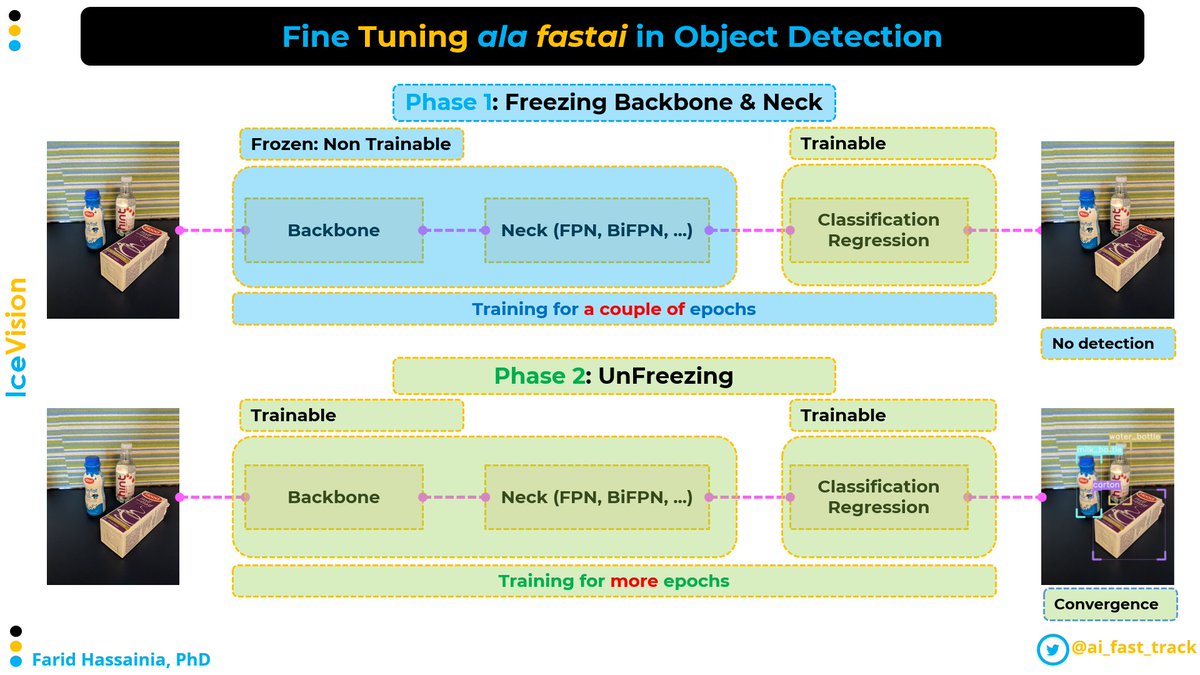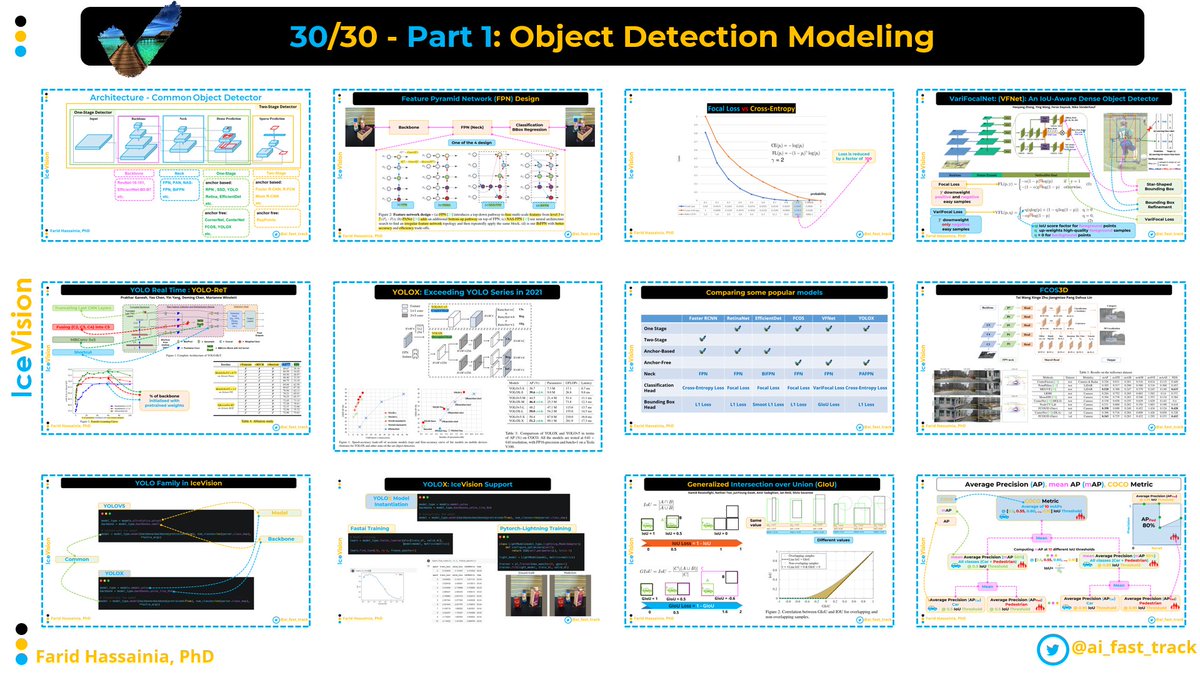
💡 Prop Tip to 🚀 fast track your object detection training
All @fastdotai users use this method for free!
It's fine_tune()
We noticed an important increase in the COCO Metric when we train object detection models using this method even with the simple default values
All @fastdotai users use this method for free!
It's fine_tune()
We noticed an important increase in the COCO Metric when we train object detection models using this method even with the simple default values

Fine tuning has 2 phases:
🧊 Phase 1: Freeze your model's backbone and neck. Train your model for a couple of epochs (e.g. 1 to 5)
📈 Phase 2: Unfreeze the whole model. Train for higher number of periods (depending on your dataset, and how hard/easy your data is)
🧊 Phase 1: Freeze your model's backbone and neck. Train your model for a couple of epochs (e.g. 1 to 5)
📈 Phase 2: Unfreeze the whole model. Train for higher number of periods (depending on your dataset, and how hard/easy your data is)
Phase 1 is a kind of warm-up for your model head.
Here is an example showing how to call the fine_tune() method.
In this case, we freeze both the backbone and the neck for 1 epoch in phase 1, and train for 20 epochs in phase 2.
Here is an example showing how to call the fine_tune() method.
In this case, we freeze both the backbone and the neck for 1 epoch in phase 1, and train for 20 epochs in phase 2.

fine_tune() also uses discriminative learning rate: assigning lower learning rate to the first layers, and higher learning rate for the last layers.
The discriminative learning rate needs a dedicated post on its own. Meanwhile, you can check fastai documentation for more info.
The discriminative learning rate needs a dedicated post on its own. Meanwhile, you can check fastai documentation for more info.
⭐️ If you are interested in mastering object detection, and standing out from the crowd, feel free to follow me
@ai_fast_track
⭐️ If you could give this thread a quick retweet, it would help others discover this content 🙏
@ai_fast_track
⭐️ If you could give this thread a quick retweet, it would help others discover this content 🙏
https://twitter.com/ai_fast_track/status/1466998473312677894
• • •
Missing some Tweet in this thread? You can try to
force a refresh








